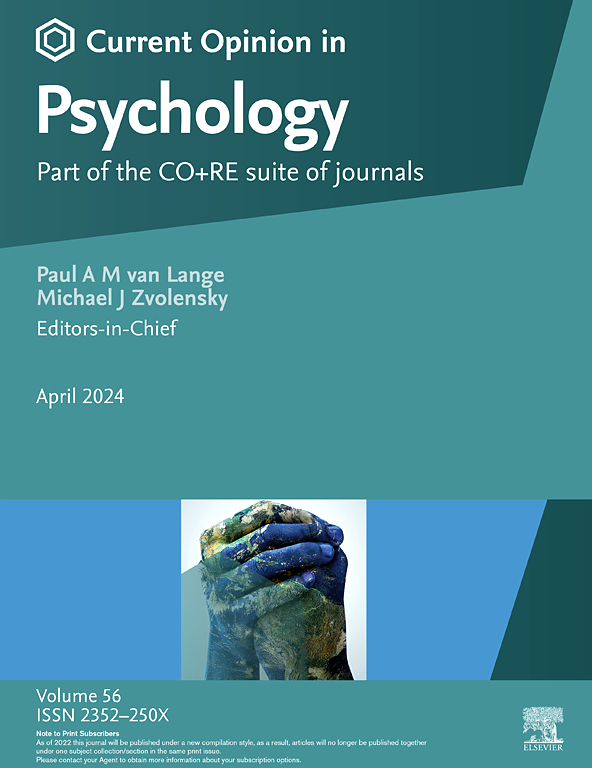Adverse effects of Eye Movement Desensitization and Reprocessing therapy: A neglected but urgent area of inquiry
IF 6.9
2区 心理学
Q1 PSYCHOLOGY, MULTIDISCIPLINARY
引用次数: 0
Abstract
While Eye Movement Desensitization and Reprocessing (EMDR) is widely recognized as an effective treatment for posttraumatic stress disorder (PTSD), its safety profile remains underexamined. This review critically evaluates the extent to which adverse effects are reported and monitored in EMDR research. We analyzed 51 randomized controlled trials from recent meta-analyses on EMDR for PTSD and found that only nine studies mentioned adverse effects, with just one employing systematic assessment protocols. In five of the nine studies, patients did report adverse effects, typically mild and temporary, but these were often described anecdotally and without predefined criteria or structured monitoring. Drop-out is more consistently reported across trials, but it is not a reliable indicator of adverse effects per se. The lack of structured monitoring of adverse effects complicates interpretation of EMDR's risk–benefit profile and limits informed decision-making in clinical settings. We discuss potential reasons for the underreporting of adverse events. Moreover, as EMDR is increasingly applied beyond PTSD, little is known about its safety in populations with complex comorbidities or in non-PTSD conditions. We also consider potential cognitive risks, such as memory blurring and the subsequent risk of false memory creation, though recent evidence suggests these effects are not robust or clinically concerning. To advance ethical and methodologically sound EMDR research, we propose integrating standardized adverse effects monitoring, preregistration of harm criteria, and safety endpoints alongside efficacy outcomes.
眼动脱敏和再加工治疗的不良反应:一个被忽视但迫切需要研究的领域
虽然眼动脱敏和再加工(EMDR)被广泛认为是治疗创伤后应激障碍(PTSD)的有效方法,但其安全性仍未得到充分研究。本综述对EMDR研究中报告和监测的不良反应程度进行了批判性评估。我们分析了近期关于EMDR治疗创伤后应激障碍的荟萃分析中的51项随机对照试验,发现只有9项研究提到了副作用,其中只有一项采用了系统的评估方案。在九项研究中的五项中,患者确实报告了不良反应,通常是轻微和暂时的,但这些不良反应通常是轶事性的,没有预定义的标准或结构化的监测。在不同的试验中,退出率的报告更为一致,但它本身并不是不良反应的可靠指标。缺乏对不良反应的结构化监测使对EMDR风险-收益概况的解释复杂化,并限制了临床环境中的知情决策。我们讨论了不良事件少报的潜在原因。此外,随着EMDR越来越多地应用于创伤后应激障碍之外,其在复杂合共病人群或非创伤后应激障碍患者中的安全性尚不清楚。我们还考虑了潜在的认知风险,如记忆模糊和随后的错误记忆产生的风险,尽管最近的证据表明这些影响并不强大或临床关注。为了推进伦理和方法学上合理的EMDR研究,我们建议将标准化的不良反应监测、危害标准的预注册和安全性终点与疗效结果结合起来。
本文章由计算机程序翻译,如有差异,请以英文原文为准。
求助全文
约1分钟内获得全文
求助全文
来源期刊

Current Opinion in Psychology
PSYCHOLOGY, MULTIDISCIPLINARY-
CiteScore
12.10
自引率
3.40%
发文量
293
审稿时长
53 days
期刊介绍:
Current Opinion in Psychology is part of the Current Opinion and Research (CO+RE) suite of journals and is a companion to the primary research, open access journal, Current Research in Ecological and Social Psychology. CO+RE journals leverage the Current Opinion legacy of editorial excellence, high-impact, and global reach to ensure they are a widely-read resource that is integral to scientists' workflows.
Current Opinion in Psychology is divided into themed sections, some of which may be reviewed on an annual basis if appropriate. The amount of space devoted to each section is related to its importance. The topics covered will include:
* Biological psychology
* Clinical psychology
* Cognitive psychology
* Community psychology
* Comparative psychology
* Developmental psychology
* Educational psychology
* Environmental psychology
* Evolutionary psychology
* Health psychology
* Neuropsychology
* Personality psychology
* Social psychology
 求助内容:
求助内容: 应助结果提醒方式:
应助结果提醒方式:


